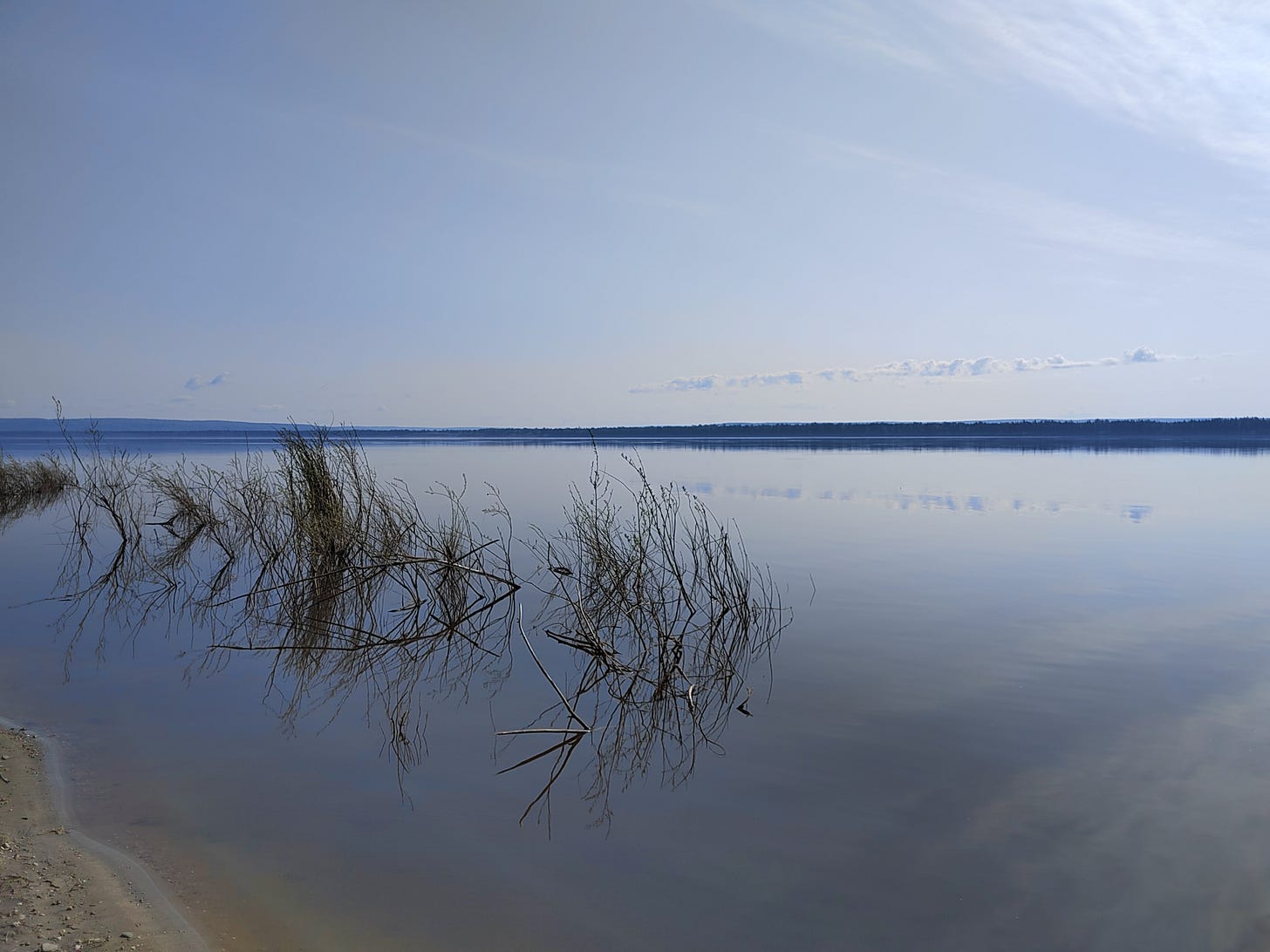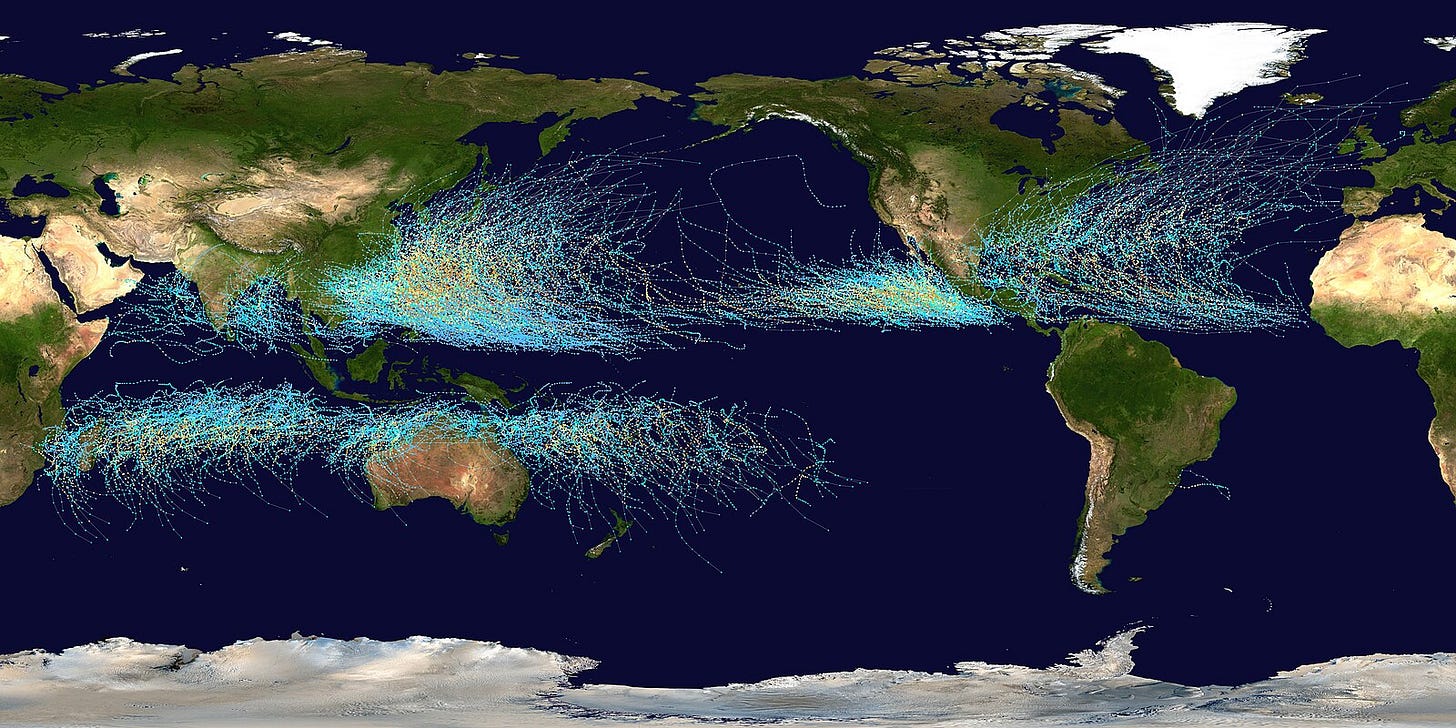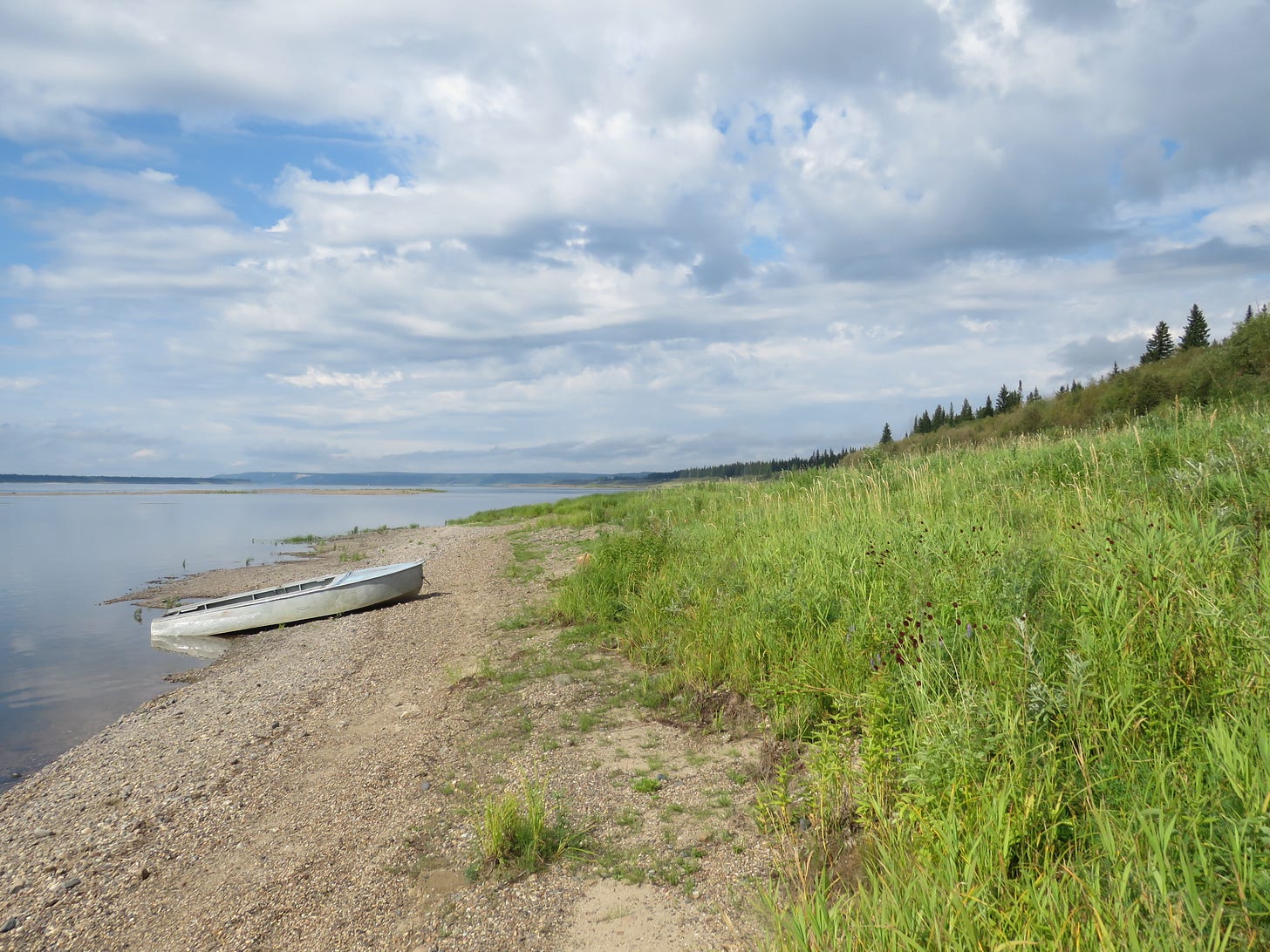The tug-of-war between forests and oceans
Biotic pump and the spatial distribution of terrestrial precipitation
I know: to the trees, but not to us,
Perfection of the life is given, whole.
And on the Earth – the sister of the stars –
We live in exile, while they are at home.
I’ve been receiving questions from readers about the biotic pump—what it is and how it came into existence. It all started in September 2004 when Victor Gorshkov and I received an email from Antonio Donato Nobre, whom we did not know at the time. Antonio had just read our 2000 Springer book, Biotic Regulation of the Environment: Key Issue of Global Change, and was excited. He wrote that since we argued in the book that natural ecosystems stabilize the Earth’s environment and climate, we absolutely must apply the biotic regulation theory to the Amazon rainforest.
So, from the very beginning, it came as a challenge. Antonio essentially said, You guys claim to have a solid theory on how life makes the Earth habitable and stabilizes this habitability. Here in Brazil, where I live, sits the mighty Amazon rainforest—and it’s not there for nothing. Prove that it regulates its climate and explain how!
Before an idea gets a shape in our reality, its parts may occasionally surface from the depths of the ocean of non-being, but they are hardly recognizable as a single entity. While I don’t recall the preliminaries, one day Victor proclaimed:
Land constantly loses water as it drains into the ocean under the force of gravity. The main flow of the Yenisey River is several thousand kilometers from any ocean. How on Earth does water get there? For forests to conquer continental interiors, they must have a way to bring water with them.
The Yenisey River in spring at approximately 60°N. The Yenisey is the seventh-largest river in the world by annual discharge, following the Amazon, Congo, Orinoco, Changjiang (Yangtze), Brahmaputra, and Mississippi. The Congo drains an area of 3.7 million square kilometers with an annual discharge of 1,300 cubic kilometers, while the Yenisey drains 2.6 million square kilometers with an annual discharge of 600 cubic kilometers. In other words, per unit basin area, the Yenisey transports just 1.5 times less water per year than the equatorial Congo (230 mm/year versus 350 mm/year), based on data from Dai and Trenberth (2002). The reason why Victor mentioned the Yenisey was because he had traveled extensively in the Siberian wilderness, including along its tributaries.
If you look up a list of our publications prior to 2004, you won’t find much on hydrology or atmospheric dynamics. Even if my PhD was in atmospheric physics, it was mostly focused on the carbon cycle. But Victor never tired of reminding me that a good scientist isn’t the one who knows the most, but the one who can learn and, based on the laws of nature, make sense of everything. So with this new idea—that forests come inland with their own water—we set out to check how precipitation depends on distance from the ocean in forested versus non-forested regions. Here’s what we found:
These graphs show the ratio of local precipitation to the mean precipitation over the Atlantic Ocean at the same latitude (in a and b) and to the mean oceanic precipitation at the same latitude (in c), referred to as LOPR. The natural logarithm is used, so a LOPR of zero indicates that precipitation at this point equals the oceanic mean.
We can see that over large forests like the Amazon and Congo rainforests, precipitation does not decline even thousands of kilometers inland, whereas in unforested regions like Australia, it decreases significantly. The direction in which this decline is measured is aligned with the prevailing wind direction.
By watching the animation in panel (a) long enough, we notice that precipitation over the Atlantic Ocean at this latitude (3°S) reaches a minimum near the center, farthest from the Amazon and Congo rainforests, which flank the ocean to the west and east, respectively. The rainforests are winning the tug-of-war with the ocean for moisture—evaporated water is transported away from the ocean and condenses, falling as precipitation over the forests.
Like rainforests, tropical storms pull in moisture from their surroundings and need a lot of it to fuel their powerful winds. But where the biotic pump is at work, there’s not much water vapor left for hurricanes. Tropical storms never form between the Amazon and Congo rainforests.
Let us now take a look at the Eurasian forest belt, panel (b). Below is the same graph but with precipitation shown in absolute units:
We can see that when the forest is dormant in winter, most precipitation is concentrated over the ocean. Over the continent, it decreases from west to east, following the predominant air movement. In the summer months, when the forest is most active, it draws moisture away from the ocean. During this time, precipitation over the ocean is several times lower than in winter—despite the higher summer temperatures! Meanwhile, the seven thousand kilometers of summer forests experience relatively high and spatially uniform precipitation.
In contrast, in Australia, where natural vegetation cover is lacking, precipitation rapidly decreases inland, regardless of whether it is the dry or wet season (panel c). The unvegetated continent is literally locked for atmospheric moisture.
This was not always the case. Australia used to be much greener and wetter before the first humans set foot on the continent. In our first publication on the biotic pump topic, we wrote:
In Australia, the continent-scale forested river basins ceased to exist about 50–100 thousand years ago, a time period approximately coinciding with the arrival of first humans. There is a host of indirect evidence suggesting that humans are responsible for the ancient deforestation of the Australian continent (see discussion in Bowman, 2002). It is clear how this could have happened. To deforest the continent, it was enough to destroy forests on a narrow band of width l along the continent’s perimeter. This could be easily done by the first human settlements in the course of their household activities or due to the human-induced fires. This done, the biotic water pump of the inner undisturbed forested part of the continent was cut off from the ocean and stalled. Rapid runoff and evaporation eliminated the stores of soil moisture and the inland forests perished by themselves even in the absence of intense anthropogenic activities or fires in the inner parts of the continent. As estimated above, this forest-to-desert transition should have been instantaneous on the geological time scale, so it is not surprising that practically no paleodata were left to tell more details about this ecological catastrophe.
As our generation has been taught to verify our understanding of climate with numerical climate models, the question arises: what do models say about vegetation-related moisture transport? Over the years, I’ve occasionally heard rumors of one modeler telling another that global climate models have no trouble transporting moisture to the interior of continents “without any biotic pump.”
Since I am not a climate modeler, I could only point out apparent inconsistencies that contradicted this claim. For example, until the development of kilometer-scale models in recent years (which too have their issues), global climate models underestimated moisture transport to the Amazon rainforest—the most powerful biotic pump on Earth—by nearly half. But recent research has uncovered a crucial technical detail that highlights the models’ general inability to adequately represent the role of vegetation in moisture transport.
It’s a big topic, but I’ll keep it brief. Modern global climate models don’t simply solve the equations of hydrodynamics, as many people might think. Instead, they include a built-in subprogram—essentially an artificial additional degree of freedom—that generates precipitation and air motions based on its own, more-or-less arbitrary rules. This is known as convective parameterization.
At each time step, convective parameterization schemes assess how unstable a given grid cell of the model is to convection. Convective instability occurs when air temperature decreases too rapidly with altitude—specifically, when the vertical lapse rate of air temperature exceeds a certain critical value. In this case, a rising moist air parcel, ascending adiabatically, remains warmer than the surrounding air, allowing it to continue and accelerate its vertical motion.
If a grid cell is found by the scheme to be unstable, convection of a predefined magnitude is artificially initiated to adjust the temperature profile toward the moist adiabate. So, in models with convective parameterization, a portion of precipitation is generated within the grid cell by convective parameterization schemes, while the rest results from the larger-scale air motions explicitly resolved by the model.
To make a long story short, when convective parameterization is turned off, total global precipitation doesn’t change significantly, but moisture transport to land—especially to the Amazon rainforest, as well as in Africa, India, and elsewhere—is notably reduced, while oceanic precipitation, on the other hand, is enhanced. In this modeled world, forests lose the tug-of-war with the oceans!
Differences between observed precipitation (GPCP), global climate models with convective parameterization (AMIP), and the same models with convective parameterization disabled (ConvOff), according to Maher et al. 2018. The models have a resolution of 2.5x2.5 degrees, though ConvOff-type issues persist and grow in high-resolution models, a topic for a future post.
This means that, to a large extent, the land-ocean atmospheric moisture transport in current global climate models is not derived from first principles. Instead, it is represented by empirical parameterizations selected based on the criterion that the model output must fit the observations. This reduces the models’ ability to predict climate responses when external conditions deviate significantly from those to which the models were calibrated. Recent anomalous warming, unpredicted by models and linked to disrupted moisture transport from the ocean to the Amazon and Congo forests, could serve as an example.
To summarize, our initial response to Antonio’s question—how forests regulate their climates—was to demonstrate that they bring water inland.
Imagine that we examined precipitation distribution in forested and non-forested regions and found that, in both, precipitation decreases significantly toward the inner parts of the continents (as it does in winter in the boreal forest zone when the forest is dormant). In other words, imagine an Earth where forests could only be found in the coastal zones of otherwise dry continents (as they are now in Australia, for example). Numerical climate models on such an unforested planet would successfully simulate the lack of moisture far from the coast. Kids would be taught in schools that it is a robust feature: as moist air travels inland from the ocean, it loses moisture to precipitation and runoff, making continental interiors dry—it’s solid physics!
We are lucky to live on a different, still vibrant and wonderful planet, where forests act as green oceans on land, sharing water with and fostering biological productivity in the surrounding regions, thus enabling rich human life. In future posts, I will discuss the physical mechanisms of the biotic pump that enable natural forests to draw water vapor inland and keep the land watered.
Yenisey in late August
Linked publications
Bowman, D. M. J. S. (2002). The Australian summer monsoon: a biogeographic perspective. Australian Geographical Studies, 40(3), 261-277. https://doi.org/10.1111/1467-8470.00179
Dai, A., & Trenberth, K. E. (2002). Estimates of freshwater discharge from continents: Latitudinal and seasonal variations. Journal of hydrometeorology, 3(6), 660-687. https://doi.org/10.1175/1525-7541(2002)003<0660:EOFDFC>2.0.CO;2
Hagemann, S., Chen, C., Haerter, J. O., Heinke, J., Gerten, D., & Piani, C. (2011). Impact of a statistical bias correction on the projected hydrological changes obtained from three GCMs and two hydrology models. Journal of Hydrometeorology, 12(4), 556-578. https://doi.org/10.1175/2011JHM1336.1
Lilly, D. K. (1960). On the theory of disturbances in a conditionally unstable atmosphere. Monthly Weather Review, 88(1), 1-17. https://doi.org/10.1175/1520-0493(1960)088<0001:OTTODI>2.0.CO;2
Maher, P., Vallis, G. K., Sherwood, S. C., Webb, M. J., & Sansom, P. G. (2018). The impact of parameterized convection on climatological precipitation in atmospheric global climate models. Geophysical Research Letters, 45(8), 3728-3736. https://doi.org/10.1002/2017GL076826
Makarieva, A. M., & Gorshkov, V. G. (2007). Biotic pump of atmospheric moisture as driver of the hydrological cycle on land. Hydrology and Earth System Sciences, 11(2), 1013-1033. https://doi.org/10.5194/hess-11-1013-2007
Makarieva, A. M., Gorshkov, V. G., & Li, B. L. (2013). Revisiting forest impact on atmospheric water vapor transport and precipitation. Theoretical and Applied Climatology, 111, 79-96. https://doi.org/10.1007/s00704-012-0643-9
Makarieva, A. M., Gorshkov, V. G., Nefiodov, A. V., Chikunov, A. V., Sheil, D., Nobre, A. D., & Li, B. L. (2017). Fuel for cyclones: The water vapor budget of a hurricane as dependent on its movement. Atmospheric research, 193, 216-230. https://doi.org/10.1016/j.atmosres.2017.04.006











Thank you for this. The North American plains Indians, the Lakota and Dakota, say mni wiconi, meaning water is life. Modern sensibility might interpret this sequentially, as simply meaning that life follows water. Nothing new there. But I think the indigenous see, and you demonstrate, a more wholistic understanding, that water also follows life.
Following this idea the Green Wall of Africa should get to Somalia, specially considering that Somalia was a forest before